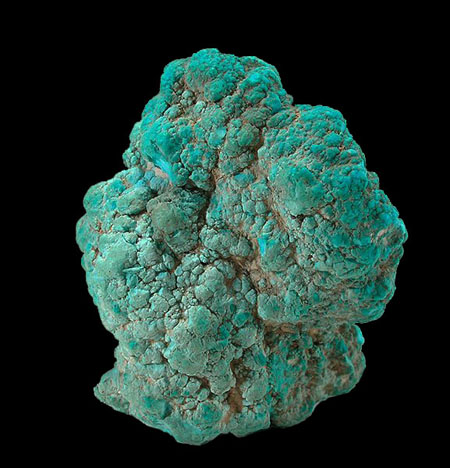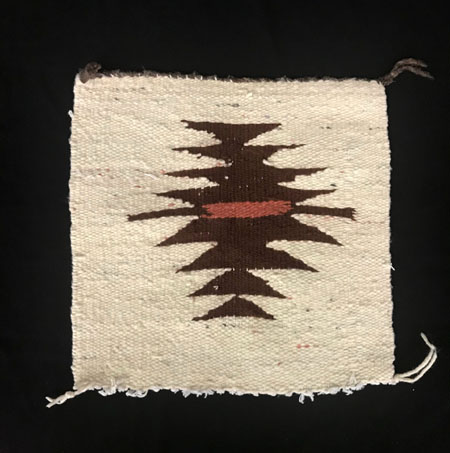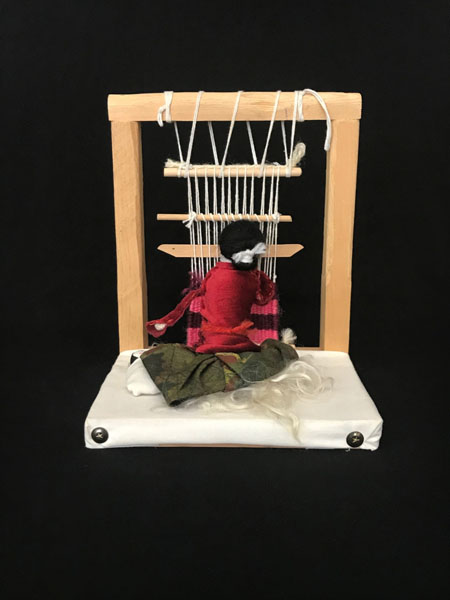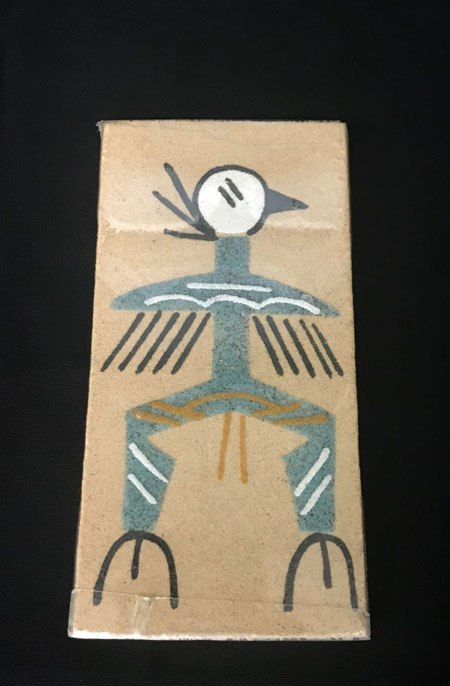Two copies of the Desert Culture Area kits are available for checkout. This kit is one complete unit, adaptable for grades 3 to 8. Included in the kit are integrated lessons outlined in the teacher's guide and artifacts that have been carefully selected to acquaint students with primary sources. Below are some images and labels about some of the artifacts in this kit.
Raw Turquoise
This is a piece of turquoise in its natural state. Turquoise is a stone which comes in shades of blue and blue-green. It is found in rock depositis in the New Mexico, Arizon, and Nevada. The Navajo (Diné), Hopi, and Zuni people use turquoise to make beautiful jewelry. Before it is used for jewelry, the raw stone must be polished and shaped to bring out its full beauty. Real turquoise jewelry is very expensive.

Navajo Rug
This small Navajo rug was woven by hand. The wool for the rug came from sheep that the Navajo people raise. The wool was sheared off the sheep, cleaned, combed, spun into yarn, and dyed many different colors. Then it was woven on an outdoor loom. If you look carefully at the rug you may be able to see the strings from the loom running through it. The designs used in the rugs are passed down from mother to daughter, generation after generation.

Weaver at Loom
This is a model of a Navajo loom, showing how rugs are woven. Looms were usually built outdoors, in front of the hogan. Strings were stretched up and down on a wooden frame and the year was woven sideways through the strings.

Sandpainting
This picture has been carefully painted using colored sand. Although it shows a sandpainting figure, it is not a tre sandpainting because it is glued to wood. The figure represents on of the people used in Navajo healing ceremonies. The arms are always raised and both feet always face the same direction. The turquoise-colored lines across the chest represent a turquoise necklace, and the lines from the ears represent turquoise earrings. The two lines on the top of the head symbolize a head father which gives protection to the figure.

